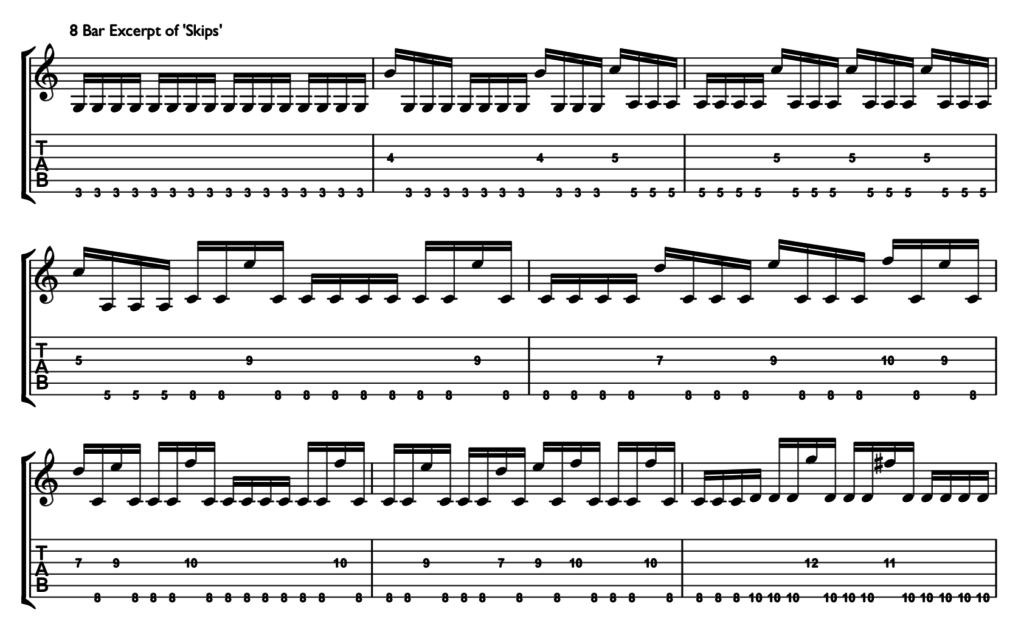Reduce
12 April 2018
Reduce what you do to it’s simplest form. Break problems down reductively. In trying to play something complex, it’s always tempting to ‘brute force’ your way through a piece. You might pick 8 bars at a time, and just stoically repeat those 8 over and over, intending to ‘shed’ your way to playing the 8 flawlessly. There might be one stumbling block or several, but (to take the metaphor further) you will continue to run along the path, stumble on the blocks, but eventually count on muscle memory to take over.

This reliance on muscle memory is cool to a point, because you do want to train to the point where you can play from ‘that place’, but there is more work to do to avoid stumbling. Being present in each step of the piece is the approach I take.
In the above example, I think there is a stumbling block at x. I would start by playing x, play x-1 then x, x-2, x-1, then x.

Observe what’s happening – what is the block? Is it a shift in position? No, this section is entirely in one position.

Is it a challenging fingering or other LH issue? Are you sure the fingering you’ve chose is the best? That might be it – try different fingerings, and notate the solution that works best for you. Here, I suggest second finger on the 6th string, using 1st, 3rd and 4th fingers as they naturally fall. What about the RH – is there something challenging there? Definitely – that’s why it’s called ‘Skips’. Now, create an exercise from the smallest fragment you can play, using the prompting questions above as a guide to find trouble spots. You might consider pulling these from what we looked at:

Look at your watch: give each exercise 3 minutes, then revisit your passage. What’s changed? Observe how you feel playing it. Can you observe your RH’s motion better during the 8? Is the shift now ingrained in your muscle memory?
Comments powered by Talkyard.